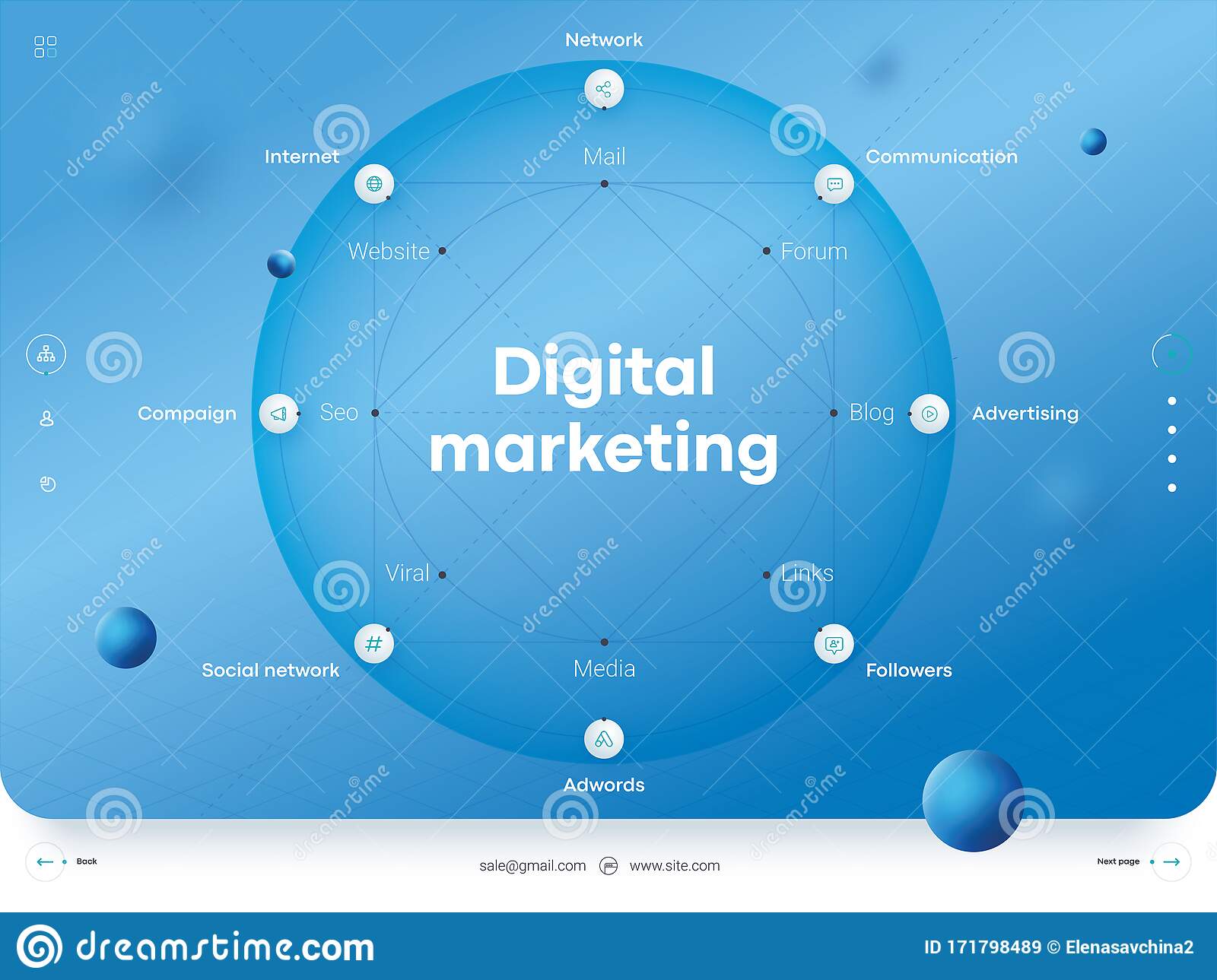
Inbound marketing is designed to attract potential customers by aligning with a buyer's journey, the natural online process. Buyers have an immediate need, or are ready to move on. They have already done their research and narrowed down their options. Inbound marketing is therefore a more effective marketing strategy for businesses. Here are some key differences between outbound or inbound marketing. And why should you use one over the other?
Inbound Marketing is a non-intrusive method of marketing
Inbound marketing involves attracting customers to your company through content. Your marketing will be done by attracting potential customers to your site through content and not vice versa. Content marketing, social media marketing and email marketing are all examples of inbound marketing strategies. Your website must also answer buyers' questions. Inbound marketing is not as intrusive as it sounds. Your company will be providing consumers with the information they need, and this will establish a relationship with them.
Inbound marketing targets consumers who are looking for what you have to say. Inbound marketing is sometimes called "permission marketing", a term that was invented by Seth Godin. Inbound marketing is content like articles, videos and podcasts. It also uses social media posts and blogs. Outbound marketing relies more on cold calls and direct mail for selling products and services.
It is more lucrative

The main difference between inbound or outbound marketing lies in how you reach your targeted market. While inbound marketing targets people who are actively looking for your product or service, outbound marketing targets people who are passive and are not actively searching for a solution. Paid media strategies like Google Ads or Facebook are an example for outbound marketing. It is difficult to quantify ROI for this method.
When comparing inbound and outbound marketing, inbound marketing is the most profitable method. This type generates more qualified leads with a higher ROI. Outbound marketing attempts to reach a large audience, but fails in reaching the most relevant. Inbound marketing concentrates on lead quality rather than quantity. Blog posts, informative articles, research papers, videos, and blog posts can all be effective in generating demand from potential clients. Instead of spending money to reach a mass audience, invest in a few high-quality leads who are most likely convert to customers.
It is simpler to track
Inbound marketing can be tracked much more easily than traditional forms. Analytics tools make it easy to track the success of your marketing campaigns. You can track your results with free tools and enterprise-level CMS platforms. Here are three tips to help track your inbound market metrics. These insights can be used to improve your marketing strategy. Set clear goals, track your results and keep them updated.
Effective marketing efforts can only be measured by measuring them. The more metrics you can collect, the more effective your inbound advertising campaign will be. These metrics can be used depending on your business goals to determine which elements of your marketing strategy work best. For example, if your efforts are increasing conversion rates, you can use this data to measure the success of your campaigns. And once you've mastered these metrics, you can make adjustments to your strategy.
It is much less intrusive

Both methods work, but inbound marketing is better for businesses. Inbound marketing is more personal and allows for customers to contact you directly. It focuses on valuable content that makes customers happy. Inbound marketing does not feel intrusive. Inbound marketing encourages consumers give their contact details rather than soliciting them. This is beneficial to many businesses, as it can boost sales without being intrusive.
Inbound Marketing is less intrusive than traditional outbound advertising. Inbound marketing focuses on building relationships with customers and educating them about the company's products. It is more discreet than traditional marketing and better aligns with digital customer needs. Inbound marketing has proven to be more profitable for businesses in recent times because of its many benefits. Here are three key differences between inbound & outbound marketing.
FAQ
Do I have to post links to content on other sites?
Yes! This is known as link building. It's a great way increase traffic to your site by linking to other sites. Links to credible sources should only be included.
How long should my content marketing be lasting?
It all depends on what your goals are. Businesses may be looking for immediate results, while others want long-term growth. We recommend that you begin with three months worth of consistent content creation, and then review your work after that time.
How much does content marketing cost?
Prices for content marketing vary depending on whether the solution is outsourced or managed by you. Outsourcing content market services is often cheaper than hiring fulltime employees. This allows you to scale quickly, when you need it.
HubSpot research shows that outsourcing content production can cost around $5 per lead (for B2B businesses) and $22 per lead (for consumer brands).
There are many web resources that offer free content marketing tools, which you can use to create compelling content that converts.
There are many ways you can optimize content to be found on search engines like Google and Bing. For example, you can write original articles, guest post on blogs, curate content from other websites, and repurpose existing materials.
You will need to know how to create great content if you decide to go the self-produced content route. It's easy to create content once you have it down.
You can start by creating simple landing pages using WordPress and then move on to building out your site. You can then build your portfolio over time.
How does Content Marketing Strategy help me?
Content Marketing Strategy gives access to data you might not otherwise be able to. This data allows to identify which types and content perform well.
It will help you determine the best strategies to increase traffic to your website. And it provides insight into your audience's behavior so that you can develop even better content.
This allows you to spend less time worrying about which content is good and more on what works.
A Content Marketing Strategy also helps you analyze what messages resonate most with your audience.
By analyzing these messages, you can figure out what content they prefer. So you can create similar pieces of content and keep those successful ideas going.
A Content Marketing Strategy is a tool that helps you monitor the performance of your content. By sharing content, you will be able to easily identify which types of content converts better.
A Content Marketing Strategy can be summarized as the key to ensuring that your content performs well.
What is strategic marketing?
Content marketing is the art of creating content that people can share across different channels. It's about giving people what it is they want. The most successful companies are those who understand this.
Strategic Content Marketing gives you the ability to provide exactly what your clients need at precisely the right time.
It is important to understand what people care about, and to listen to their thoughts. It is important to provide high-quality content that solves their problems and answers their questions. This creates trust and loyalty that will ensure you are there when they need you.
Statistics
- We found that 40% of businesses don't have a documented strategy yet. (semrush.com)
- An example of an overarching goal could be: "In 2022, we want to achieve a 20% increase in revenue created by organic content and generate 15,000 MQLs with a budget of $30,000." (semrush.com)
- Measure your goals with a progress indicator of 0-100%. Make your goals collaborative and transparent (semrush.com)
- According to our research, brand awareness, attracting traffic, and generating leads remain the key content marketing goals in 2022. (semrush.com)
- According to research compiled by Coschedule: Companies that publish 16+ blog posts a month get as much as 3.5x as much traffic as those that publish 0-4 posts a month. (criteo.com)
- In fact, would pay more for a better customer experience, and 86% of B2B buyers would pay more. (neilpatel.com)
- Out of the 1,500 marketers we surveyed for our State of Content Marketing report, 78% who felt their content marketing strategy was exceptionally effective in 2021 had documented their strategy. (semrush.com)
- Content marketing produces 3X more leads per dollar spent. Content marketing costs 62% less than traditional marketing. (criteo.com)
External Links
How To
What are the best content marketing platforms?
While no platform works for all industries, there are some that work well in certain industries. Hubspot has been demonstrated to increase conversions by nearly half, making it a widely-used tool for marketers.
But not all tools are created equal. Some tools are better at tracking analytics, others enable easier collaboration between different departments, and others provide features such as A/B Testing that may increase your content-marketing ROI.
Before you decide on a platform, think about the following: What are their pros and cons? Will it meet my needs now? What about in two years?
Entrepreneur Magazine's top five content marketing platforms are listed below.
Marketo Content Studio - Content Marketing Platform #1
Marketo is a social media management platform for enterprises. It offers a suite of products and services, including CRM software, social publishing tools, and analytical dashboards.
They also offer a content studio that gives businesses access to a library of pre-made templates and graphics that can be modified into customized designs.
This means you don’t need time to create new graphics and write unique content. Instead, focus on creating content that is relevant to your audience.
One of the main reasons for this success is that Marketo makes it easy to add videos and images to your blog posts. This improves the visual appeal of your posts and encourages readers to engage with them.
Marketo requires that you upload your files to Marketo in order to edit them.
Trello, Content Marketing Platform #2: Trello
Trello can be compared to Kanban boards for project management. Both provide lists of tasks which can be assigned to users and monitored for progress.
Trello allows you to set up individual boards for each team member and give them specific responsibilities. It also provides a convenient workflow for sharing information between workers.
Trello does not require special software to operate, unlike Kanban boards. Trello can be used on almost any device.
Trello makes it possible to invite people to collaborate on projects.
This allows you to create a private forum and only reveal the necessary details to others who need them to complete a task.
Google Suite Content Marketing Platform 3
Google has many products for business owners. Google Docs (Sheets), Slides (and many more) are part of Google's G Suite.
This application is not free. You'll need to pay per user. If you intend to use them multiple times, there are many plans that start at $5 per monthly.
Two licenses are required to be able to create and embed links from other websites.
If you are only looking to create one document, however, you can get it for free.
Google tools integrates well with Gmail, which is a significant benefit. Google tools allow you to easily email documents and save data in Google Drive.
Hubspot Content Marketing Platform 4.
HubSpot is a popular web-based tool for marketing that provides a wide range of functions.
The platform allows users to manage all aspects of their website, landing pages, blogs and other websites. You can use the platform to create automated emails or track conversions.
HubSpot is also compatible with Salesforce and WordPress. This means you can connect all three platforms.
One of the most valuable features of HubSpot is that it integrates with over 200 different third-party apps. This means you can automate processes and generate reports based on real-time data.
Although you will not be able publish content directly through HubSpot, it is possible to export it in many formats including HTML, PDF and Word.
HubSpot provides a free trial version for pricing. But once you upgrade to the paid account, you get unlimited access to everything.
HubSpot can help you find a blog platform, eCommerce solution or any other tool.